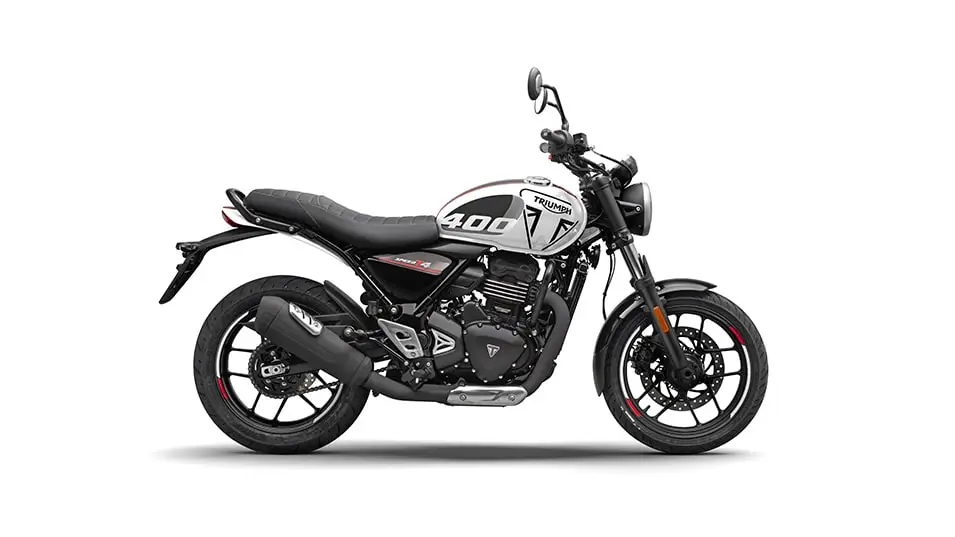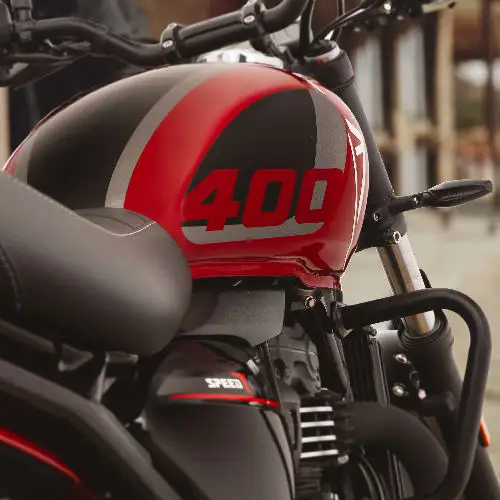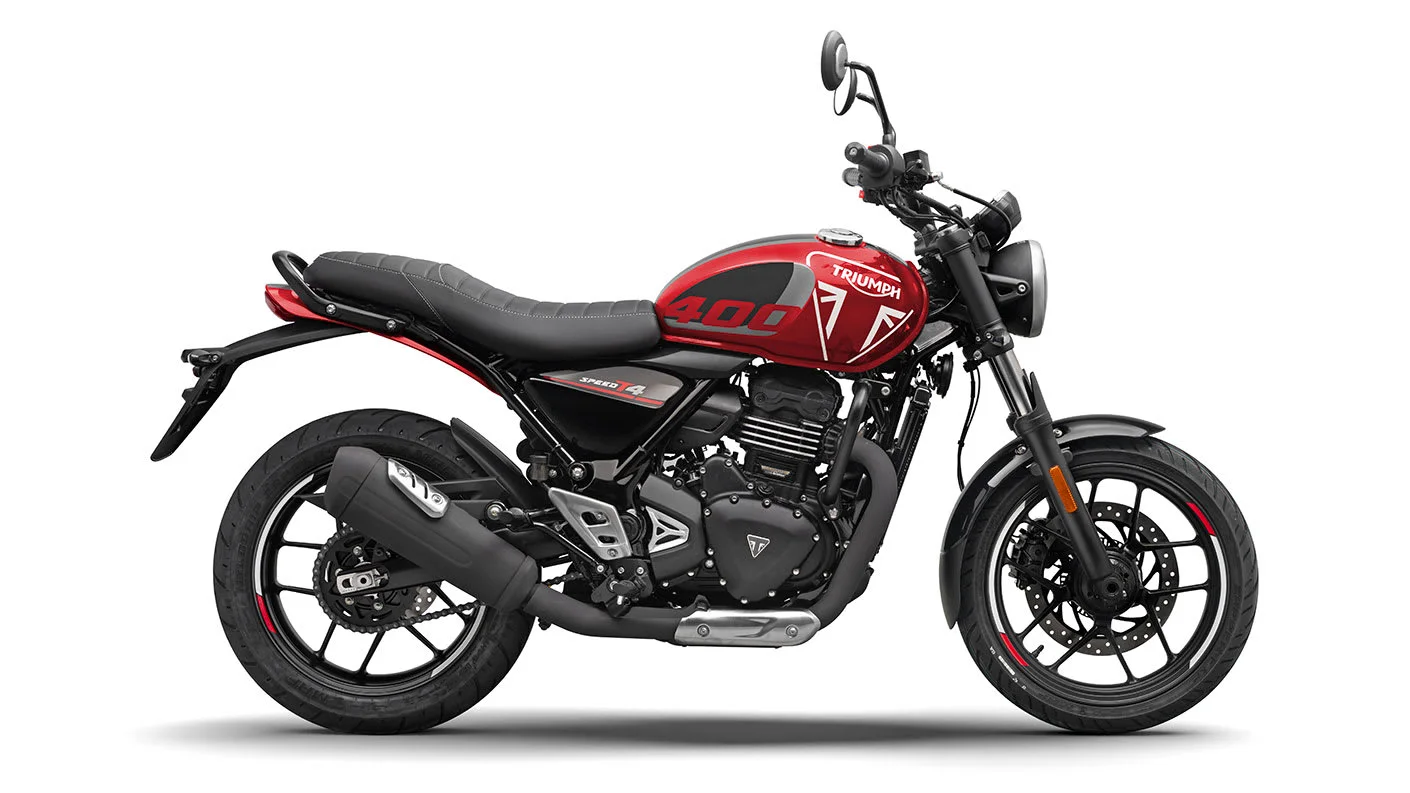Triumph Motorcycles has unveiled the updated Speed 400 alongside its brand-new sibling, the Triumph Speed T4. But what sets the T4 apart from the Speed 400, and is it really a unique ride? To find out, we hopped on the T4 for a spin. Here’s what you need to know about this new addition to Triumph’s lineup and how it stacks up against its predecessor.

Triumph’s Ambitious Step
When Bajaj and Triumph announced their collaboration last year, motorcycle enthusiasts eagerly awaited the launch of the Speed 400 and Scrambler 400X. The Speed 400 made a solid debut, offering an affordable, high-quality motorcycle with the legendary Triumph brand attached to it. It brought a refreshing blend of price, performance, and engineering, opening the doors for a wider audience to experience the Triumph name.
Now, with the Speed 400 receiving its latest update, the spotlight shifts to theTriumph Speed T4. But this bike isn’t just a clone of the Speed 400—it has its own distinct character, and I’m here to tell you all about it.
Also Read : 2024 Nissan Magnite Facelift: Stylish Design, Advanced Features, and Affordable Price Launch on October 04
What Sets the Triumph Speed T4 Apart?
While the T4 might appear similar to the Speed 400 at first glance, there are several notable differences under the surface:
- Tires and Suspension: The Speed T4 comes fitted with MRF Zapper-FX2 bias-ply tires (110/70 at the front and 140/70 at the rear), contrasting with the Speed 400’s radial Vredestein tires. It also features a 43mm telescopic front fork and a black steel headlamp bracket.
- Design Tweaks: A few aesthetic changes distinguish the T4 from the Speed 400, including an additional “400” graphic on the tank and “Speed T4” branding on the side panels. The seat height of the T4 is slightly taller at 806mm, compared to the Speed 400’s 803mm, and the ground clearance is also higher, at 170mm.
- Geometry and Weight: The wheelbase of the T4 is a bit shorter at 1386mm, compared to the updated Speed 400’s 1406mm. Interestingly, the T4 is 1 kg heavier than the Speed 400.
- Gearing: The T4 uses a 39-tooth rear sprocket, offering longer gearing compared to the Speed 400’s 43-tooth sprocket. This minor change influences the feel and performance of the bike.
- Engine Power: Powered by the same 398cc, single-cylinder, liquid-cooled engine, the Triumph Speed T4 produces slightly less power, with a reduction of 9 bhp and 1.5 Nm of torque when compared to the Speed 400.
So, how do these modifications affect the ride?
The Ride: Handling and Performance

Enhanced Torque for Urban Riding
Triumph and Bajaj have tuned the Triumph Speed T4 to offer better low-end torque, peaking between 3,500 and 5,500 RPM. This makes it particularly suited for city traffic, where smooth and responsive throttle control is crucial. The heavier crankshaft on the T4 provides more torque at lower RPMs, with 85% of the torque available at just 2,500 RPM, making it an ideal commuter bike.
Also Read : Citroën C3 Automatic Launched: Price, Features, and Competitors Explored
At 1,300 RPM, the T4’s idle is lower than the Speed 400’s 1,500 RPM, lending a more relaxed feel to the ride.
Manual Throttle Simplicity
One notable difference is the absence of ride-by-wire technology in the T4, which uses a traditional manual throttle body instead. The lack of electronic aids like traction control contributes to a rawer, more straightforward riding experience. With a top speed of 135 km/h, slightly lower than the Speed 400’s 145 km/h, the T4 is tuned for smoother, more controlled acceleration.
At 100 km/h, the bike cruises comfortably at around 5,000 RPM. While some vibrations can be felt at higher speeds, the sweet spot for the T4 seems to be in the 75-80 km/h range, which is perfect for everyday urban riding.
Comfortable Handling
In terms of handling, the Triumph Speed T4 excels with its refined mid-range power delivery. The bike pulls well from 3,000 to 7,000 RPM, allowing for easy overtaking in higher gears. The six-speed gearbox, paired with a slipper clutch, ensures smooth and hassle-free shifting.
The deeper exhaust note on the T4 is another small yet notable difference. At lower speeds, the T4’s exhaust offers a more noticeable and satisfying sound compared to the Speed 400.
Braking and Fuel Efficiency
The brakes on the T4 feel smoother, thanks to the high-friction organic brake pads. Though the brake discs are the same as those found on the Speed 400, the braking experience feels slightly more progressive on the T4.
One of the standout features of the Triumph Speed T4 is its fuel efficiency, offering around 40 kmpl compared to the Speed 400’s 36 kmpl. With its 13-liter fuel tank, the T4 provides a more extended range, making it an excellent option for both city commutes and longer rides.
Conclusion
So, is the Triumph Speed T4 simply a more affordable version of the Speed 400? Not exactly. Triumph and Bajaj have made it clear that the T4 is more than just a stripped-down version of its sibling.
Designed for riders who prefer a smooth and relaxed ride, the Triumph Speed T4 offers distinct performance advantages in urban environments. Its torque-focused engine, manual throttle, and impressive fuel efficiency make it a standout choice in its class. While it may lack some of the premium features of the Speed 400, the T4 is a unique motorcycle with its own appeal.
In the end, the Triumph Speed T4 isn’t just a cheaper alternative; it’s a bike that brings its own character, performance, and style to the table. Whether you’re navigating through busy city streets or enjoying a leisurely weekend ride, the T4 delivers a balanced, enjoyable, and cost-effective motorcycling experience.
Triumph Speed T4 vs. Speed 400: The Ultimate Showdown in the 400cc Motorcycle Arena
